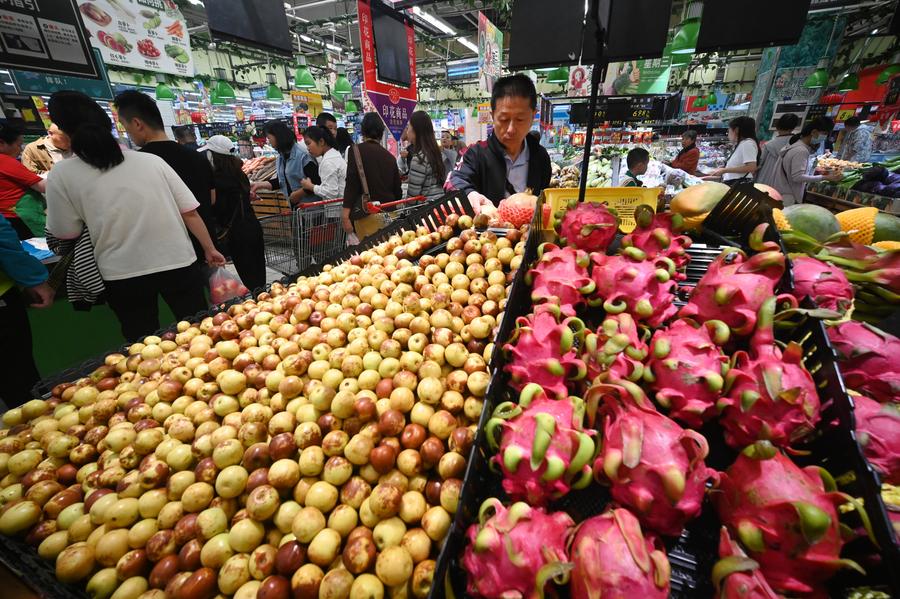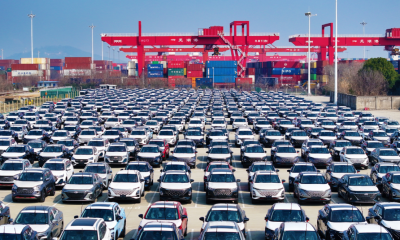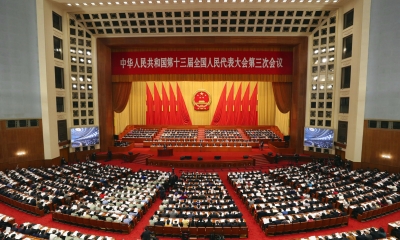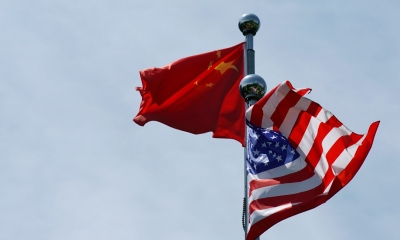Fostering New Growth Drivers for China’s Economy

Undoubtedly, boosting consumption should be our consistent focus not only for the immediate term, but for the future. To this end, further policies and measures, both incremental and structural, are needed to energetically increase the employment and people’s disposable income.
National Bureau of Statistics of China released the economic data for the first three quarters of this year on October 18, 2024. Real GDP growth slowed down to 4.8 percent over a year ago, 0.2 percentage points down from 5.0 percent growth in the first half, with Q3 growth rate at 4.6 percent amid a challenging external environment and ongoing domestic economic restructuring.
The main indicators showed a similar trend. Retail sales during Q1-3 grew by 3.3 percent y-o-y, compared to 3.7 percent growth during H1, added value of above-scale industrial output grew by 5.8 percent compared to 6.0 percent, and import and export volume up by 5.3 percent compared to 6.1 percent growth during H1.
The contribution by “three driving horses” – export, consumption and investment – to GDP growth during Q1-3, 2024 varied. Final consumption weakened, contributing 2.4 percentage points, down from 3.0 percentage points during H1, 2024. Capital formation contributed 1.3 percentage points, unchanged from H1 and net export contribution rose strongly to 1.1 percentage points, compared to 0.7 percentage points during H1, 2024. Hence, the slow-down in total GDP growth during Q1-3 was predominantly caused by final consumption, with the higher contribution by net export unable to cover the fall.
However, both consumption and industrial production saw some pick-up in September, with retail sales up 3.2 percent y-o-y, compared to 2.1 percent growth in August. The added value of above scale industrial output up 5.4 percent (up 4. 5 percent in August), and the service output up 5.1 percent (up 4.6 in August). Manufacturing PMI was 49.8 in September, almost hitting the 50 line of expansion, compared to 49.1 a month before. Index of production broke into the expansion area at 51.2, up 1.4 points from the previous month.

Over the past month, the government has launched a series of new incremental policies and measures which will provide the economy with more energetic dynamics.
First, domestic demand boost. Over 300 billion yuan has been earmarked for subsidizing trade-in home appliances, furniture, consumer electronics and cars, etc. The September retail sales of home appliances grew by 20.5 percent over August and furniture retail sales also had a positive growth. Special subsidies were provided to low-income families, and social medical insurance threshold for individuals raised by 670 yuan per person. On the investment side, the similar trade-in, with fiscal subsidies also boosted investment in manufacturing equipment and tools which registered 16.4 percent growth in September over August, contributing 2.1 percentage points to total fixed investment growth.
Second, additional fiscal expenditures. Ministry of Finance has announced an additional extra-long term treasury bond of 1,000 billion yuan, and an additional budget expenditure of 180 billion, raising the expected fiscal deficit to 4.06 trillion yuan in 2024, or deficit rate at 3.1 percent of GDP. The tax breaks and other incentives for new technologies, innovations and manufacturing will reach 1.8 trillion yuan. The central government has lifted the local government debt ceiling by 400 billion yuan, giving more room for local government spending. All those measures will provide fresh resources for development.
Thirdly, property market remedy. The central bank has further lowered down the mortgage rate and many local governments have lifted the restrictions on home purchasing. Property investment during Q1-3 registered a sharp fall of 10 percent y-o-y, and the new policies and measures will help slow down the fall.
Fourth, monetary measures to support the stock and bond market. In late September, the central bank announced a cut on reserve requirement ratio (RRR) and arranged 300 billion yuan for additional loans to commercial banks. The latter, in turn provide additional commercial banks’ loans to leading stock listed companies for buying back. The innovative monetary tools have lifted the stock markets. As of October 18, the Shanghai A share composite index closed at 3261.56, 20.6 percent up over a month.

All the latest sweeping incremental measures are totally on time and in the right direction. It is widely estimated that the growth rate in the final quarter of the year will pick up, thus enhancing the hope of hitting 5 percent GDP growth for the whole year, set at the Two Sessions – the annual plenary meetings of the National People’s Congress and the National Committee of the Chinese People’s Political Consultative Conference – early March.
On the other hand, it is by no means easy. The final quarter usually weighs for approximately 28 percent of the whole year GDP, which means it needs to grow 5.5 percent y-o-y to make the whole year GDP grow 5 percent. As a result, there is a possibility of attaining 5 percent GDP growth, also a likelihood of close to 5 percent growth for the whole year of 2024.
While making our best efforts to realize 5 percent GDP growth this year, our efforts should also be focused on the longer vision, more fundamental structural changes and new productive forces for the long-term growth.
First, a sustainable lift of final demand, especially final consumption demand. To this end, adequate growth in people’s disposable income and thus the consumer demand should be in high policy priority. Out of the total GDP growth at 4.8 percent, the final consumption contributed only 2.4 percentage points, or 50 percent. During the first half of 2024, it contributed 3.0 percentage points, or 60 percent of total GDP growth (5.0 percent). In 2023, final consumption contributed 4.3 percentage points to GDP growth, or 83 percent of the total growth (5.2 percent). The fast-declining contribution by final consumption deserves due attention and vigilance. Undoubtedly, boosting consumption should be our consistent focus not only for the immediate term, but for the future. To this end, further policies and measures, both incremental and structural, are needed to energetically increase the employment and people’s disposable income.
Second, while trying hard to stabilize the property market, more inputs should be allocated to stimulate new productive forces which is the only way to make China a medium developed economy by 2035. Good starts have been witnessed in AI technology development, manufacturing of electric vehicles, batteries, solar energy cells, aerospace and ships. Great efforts should be made to maintain this momentum and advance it to an even higher level. Continuous hard work on the two priorities above will chart a new wave in China’s GDP growth for the next decade.
The article reflects the author’s opinions, and not necessarily the views of China Focus.
 Facebook
Facebook
 Twitter
Twitter
 Linkedin
Linkedin
 Google +
Google +







